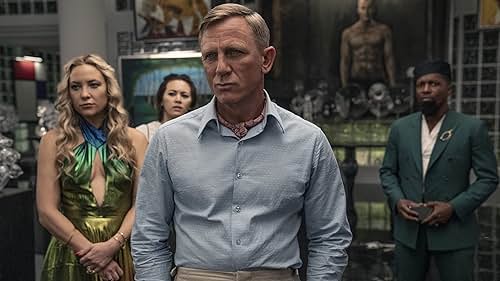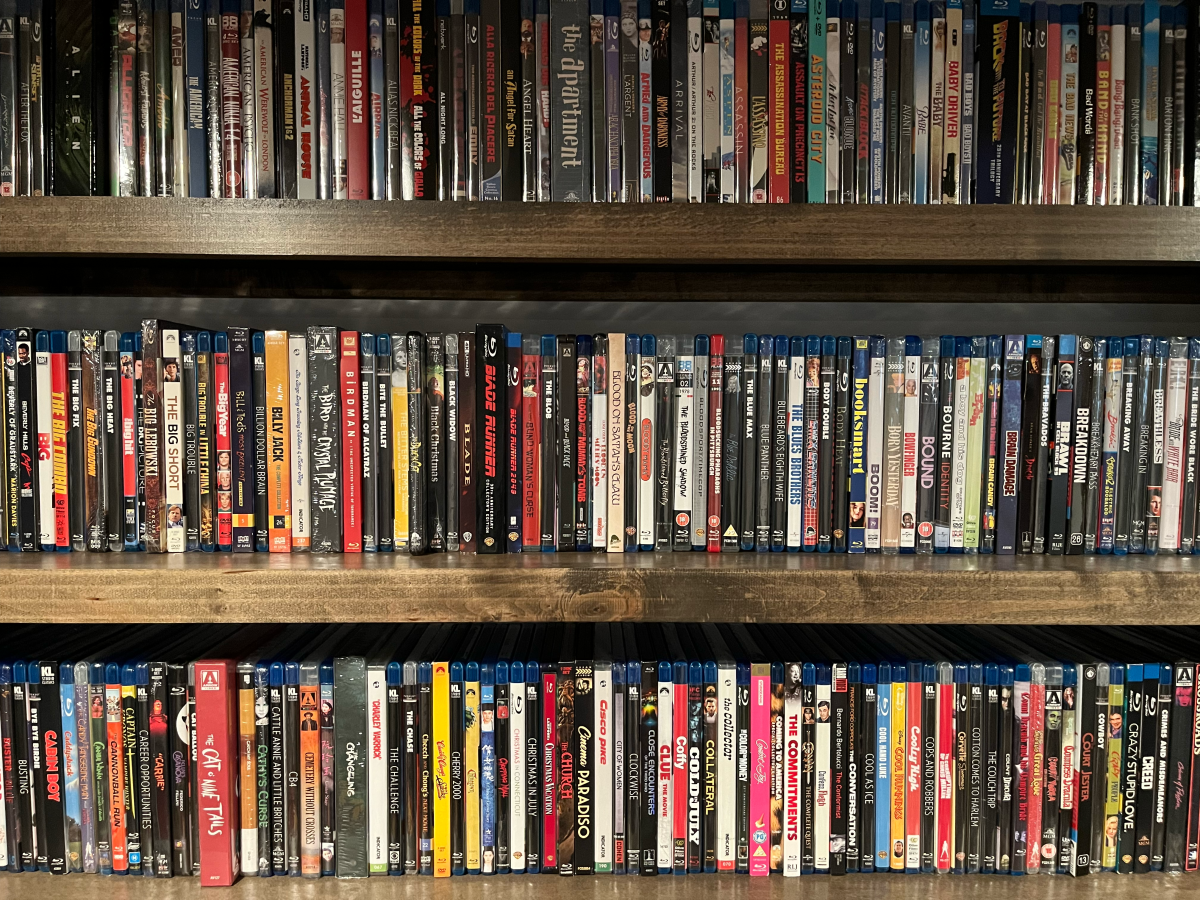Only on DVD: Part 5
Continued from Part 1 / Part 2 / Part 3 / Part 4
On my last ‘Only on DVD’ column, I dissected Paramount’s release of Confess, Fletch (2022). Looking at the reported production and distribution facts leading up to its super-secret release week, I’m tempted to call Paramount’s handling of the property “inept.” Comparing Paramount and Confess, Fletch (2002) with Netflix and Rian Johnson’s Glass Onion: A Knives Out Mystery (2022), however, I can’t help but come to the conclusion that Big Red’s distribution methodology is something else entirely.
I wanted to learn more about why Netflix chose, according to the headline of a November 27th article in the Hollywood Reporter, to leave “tens of millions on the table” by shunning a traditional theatrical release. I’m looking into Netflix specifically because of Glass Onion, but many of these same criticisms could be lobbied against HBO Max and Amazon Prime and anyone else with a production business and a streaming service. They just have fewer notable examples – and none as big as Glass Onion.
Sidenote: Let me be abundantly clear – because some readers have been confused by this in the past – I write for DVD Netflix, an entity that was cordoned off from the streaming giant known as Netflix. DVD Netflix goes out of its way to cater to its subscriber base by absorbing steadily increasing postal costs and providing a wide variety of titles despite dwindling resources. In many ways, The Little Red Envelope is the antithesis of the Big Red Streamer – even though they share distant familial DNA.
Big Red first courted industry respectability by releasing Awards-worthy releases such as Alfonso Cuarón’s Roma (2018). Since then, seven more Netflix-distributed and/or produced movies have been nominated for Best Picture at the Academy Awards, including 2022’s All Quiet on the Western Front. To date, none have won the top prize. Traditional distribution for Oscar fodder doesn’t stray too far from Netflix’s practice of limiting the exhibition of their original feature productions. Open theatrically in a few major metropolitan areas and increase the number of screens in lockstep with critical buzz, Academy Award nominations, and ticket sales.
It should be noted that the Academy once again requires a qualifying theatrical release for awards consideration (the restriction relaxed during COVID but was reinstated in 2022), and if not for this stipulation it’s likely these films wouldn’t appear in theaters at all. The Netflix limited theatrical release model never stood out as something entirely dissimilar, especially since five of their eight nominees were released since the beginning of the pandemic, when “normal” became anything but.
And then they got into the Knives Out business.
Rian Johnson’s Knives Out (2019) received widespread critical acclaim and made $311.9 million worldwide on a $40 million budget. Lionsgate greenlit a sequel in 2020 without much hesitation. Lionsgate, however, didn’t own the rights to the property. Rian Johnson had retained sequel rights and auctioned them off to the highest bidder. Enter Big Red, who outbid both Apple and Amazon, with an offer of $469 million for distribution rights of the two planned Knives Out sequels – more than double what Lionsgate had been prepared to offer. Variety quoted one anonymous losing bidder: “The math doesn’t work. There’s no way to explain it. The world has gone mad. It’s a mind-boggling deal.” We’re left to wonder how Netflix views the value of the Knives Out franchise. Where do they plan to recoup their investment?
Lionsgate CEO Jon Feltheimer considered this and saw an opportunity to stay in the Knives Out business. He thought he could parlay the distribution rights for the original Knives Out to maintain some involvement with the sequels. He imagined a world in which Netflix could stream the original alongside the sequels and release the trilogy together on physical media. Lionsgate supplied a more traditional theatrical distribution model, whereas Netflix had only thumbed its nose at exhibitioners. (Netflix attempted a simultaneous theatrical and streaming release of The Beasts of No Nation in 2015, causing the large chains to boycott the film.) Big Red would surely welcome a wider theatrical release for such a high-profile sequel. Feltheimer made the offer. Netflix declined.
In producing Glass Onion, Netflix crossed over into the mainstream; courting a big, burgeoning Hollywood franchise to compete with the headlining IP on streaming rivals Disney and HBO; and, for the first time, brokered an agreement with AMC and Regal Cinemas. (At the time, AMC’s chief executive Adam Aron proclaimed proudly and presumptuously that “both theatrical exhibitors and streamers can coexist successfully.”) And indeed, everyone expected Netflix to burst into theaters, box offices blazing, a parade of fanfare for their $469 million investment. A November 25th New York Times article suggested that sources inside the company expected Glass Onion to play on 2,000 screens nationwide. As a point of comparison, the current number one movie as I’m writing this, Magic Mike’s Last Dance, played in 2,176 theaters on Valentine’s Day 2023.
But Glass Onion only opened on 638 screens.
This decision went against the wishes of Netflix’s Film Chief Scott Stuber and Rian Johnson, both of whom lobbied for a wide release and a traditional theatrical schedule dictated by ticket sales. Those previously enthusiastic major exhibitors threatened to pull out of their agreement but stayed under the assumption that a big opening weekend would change Netflix CEO Ted Sarandos’ way of thinking. Despite internal disagreement, Sarandos doubled down on his demands of a one-week theatrical run, followed by a 30-day window before arriving on Netflix’s streaming service.
There’s some industry thinking to back up Sarandos’ methodology. David Zaslav, chief executive at Warner Media Discovery, said “a movie that opens in the theater performs five times as well as a movie that you put directly to streaming.” The same held true throughout the history of direct-to-video releases, which must be seen as the most direct comparison for the more than 817,000 offerings cluttering app space. Movies that play in theaters receive a quality control pass from potential viewers, but here’s the problem – and I admit there’s a gap in available information, but let’s do the best we can. It wasn’t whether Netflix left money on the table, but how much money they left on the table. In the Hollywood Reporter, Wall Street analyst Eric Handler commented, “They had a big chance and they whiffed.” Netflix pulled a box office hit from theaters, during a period of industry uncertainty. Any other studio would have killed to have that kind of opening. Netflix denied exhibitors the chance to benefit from the increased patronage Glass Onion had generated, choosing market manipulation over concrete money in their pockets.
In Glass Onion’s first weekend in theaters, it made $13.2 million – good for third place behind Disney’s Wakanda Forever and Strange World. Both of those films played in more than 4,000 movie houses. Glass Onion made $4,000 more per screen than Wakanda Forever and $14,000 more per screen than Strange World. $14,563 to be precise. Sarandos, meanwhile, carried on undeterred and downplayed the theatrical significance. “…we make our movies for our members,” he said, following it up by saying, “Most people watch movies at home.”
This statement might not seem like much, but it tells us everything we need to know.
Sarandos only wants to exhibit Netflix movies on the Netflix streaming service. In a perfect scenario, he’d eschew theatrical exhibition altogether. As a company devoted to its streaming content, that makes sense, but it still needs theaters for credibility, awards eligibility, and the viewership bump (the number of eyes on home television screens). He does not care about the potential viewer experience. He’s in the content business, not the movie business. Anyone that’s not a Netflix subscriber should become a Netflix subscriber. This doesn’t benefit the public, many of whom want to see the film but don’t or can’t subscribe to Netflix. After all, there is this very real thing called The Digital Divide. The “most people watch movies at home” statement has been true for decades – since the proliferation of home video – but more and more people watch movies at home because they’re increasingly forced to watch movies at home. Paramount secreted Confess, Fletch into theaters. Netflix provided such a narrow window for Glass Onion that many just couldn’t make it. Roll back the calendar a few years and even the worst and least profitable mainstream movies had two weeks to prove themselves.
Furthermore, no matter what they say, streaming services don’t want theaters to survive. The sooner the traditional exhibition branch goes extinct, the sooner Sarandos can operate Netflix in a vacuum. That kind of world would absolutely revive the pre-U.S. vs. Paramount (1948) distribution business model. He’s not alone, of course. Every studio with its own streaming service would prefer to use that as an exclusive subscription-based venue for exhibition of its product. I keep saying this because it bears repeating: a studio that produces a movie and exhibits it only on its own streaming service is engaging in the exact practice that caused the Paramount decision in 1948. The times and venues have changed, but without the protection that that Supreme Court decision afforded, the fundamental makeup of those monopolistic practices remains a very real potentiality.
The only barrier between a system whereby Netflix produces a film and exhibits that film only on its streaming service is the viewing habits of the moviegoing public. No physical media. No theatrical releases. If streamers successfully lock everyone to their couch, in perpetuity, endlessly scrolling a deluge of disposable content, the industry will be forced to change with the times, kneeling before its streaming overlords. The requirements for Oscar contention would be dismissed. The perceived differences between a theatrically released movie and a direct-to-streaming release decrease every day.
We are not powerless. We are not slaves to entropy, but we do need to engage in a little more consumer activism. We not only need to return to theaters, but we need to continue to purchase physical media and rent physical media from DVD Netflix and our library systems. Maybe you’re still one of the lucky few with a brick-and-mortar DVD rental store in your neighborhood. It’s a little more effort, but if we become slaves to convenience, we’ll lose one of the things that made us movie watchers, cinephiles, and film geeks in the first place. Choice.
How we watch movies matters. Streaming services can be wonderful tools; they’ve given us the ability to find movies that had been completely unavailable for decades. If we abandon all else, however, we’ll be subscribing to a system that dictates how we watch and when we watch it. It’s not a new system, of course. We once liberated ourselves from a similar construct with the invention of the VHS tape, but this time around we won’t have the luxury of escapism provided by our connection with big movies on the big screen. The movies might never even play on the big screen.
Maybe there isn’t some sort of diabolical schematic for how to take over the world via streaming video. Maybe it’s nothing more than this oft-repeated rumor that physical media is dead, that home video consumers have been wooed by the streaming dawn. Netflix certainly isn’t the only service that fails to offer alternative viewing methods for their product.Weird: The Al Yankovic Story (2022) saw an initial Blu-ray and 4K release in Australia months before one was even announced in North America.
I would be shocked if the Roku-produced film had even found a fraction of its audience on the little-known streaming service. Most people I asked about the film didn’t even know how to watch the film online. Much like the belated release for Confess, Fletch, Weird may have missed any sort of window to capitalize on its good reviews. At least its devotees could eventually slot this film on the shelf next to UHF (1989), which is far more than I can say for the prospects of ever seeing a case spine that reads Glass Onion.





